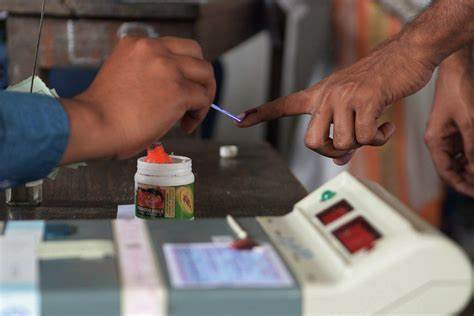Manas Pattnaik
Game of Thrones (GoT) season 8 started recently. But, we in India have been in the thick of the Game of Elections (GoE) for the past few months now. Indian political season might give even GoT a run for its money in terms of TRPs. Our politicians say one thing, do something else. Statements and guarantees matter only if they are backed by concrete action. That, alas, seldom happens with Indian legislators.
Most parties have fine-tuned Chanakya niti to serve their own interests. Allegiances can be switched in a matter of seconds. And all this is abetted by a maelstrom of fake news on social media.
With about two-thirds of India’s populace under 35, and an additional 15 million first-time voters aged between 18 and 19, young men and women can sway the national vote in any course. Dogged, aspiring and ardent for change, they are barely centred on topics such as caste and religion. More than 150 million of these first-time voters were the protagonists at the general election in 2014. This time, too, the young voters may command results.
There is another key factor, as well. A report produced by financial services group Centrum, titled ‘Elections 2019: The Swing Factor’, projects that women will play a pivotal role at the ongoing general election as they are expected to vote in greater number than men this time. It is significant that women are now turning out in significant numbers and their vote is not swayed by family members. It is apparent women will determine results of Election 2019.
Women’s turnout has increased by 20 per cent, compared with only a 5 per cent increase in turnout of men, between 1962 and 2014. The focus of this election will be on women in villages. The government must be appreciated for its efforts to encourage political participation of women right from the village panchayat level.
Elections have always been about posturing and perceptions. The media, particularly television, have become important platforms of debate and battle of perceptions.
This will be the most important election of our times. Winning will probably be based on solving a complex equation with an array of variables. A lot of nuances are at play. This election has no differentiated development agenda that can separate one party from the other. Most parties are singing songs of development on the same lines; there is barely any difference between these. The political rhetoric has gone back to the decades-old mix of caste, religion and novel theatrics. The voter might be left with following the tested path, “What is in it for me?” Unlike the US, there is no swing state concept in India. Most states and constituencies swing from time to time.
The battle has also moved to smartphones, artificial intelligence and apps. Drones and robots might even be used for snooping. This is the new battleground. There is even a fake news show on a prominent Odiya news channel. The advent of new technologies eases and amplifies the spread of rumours. Parties across the country are profiting from fake news and influencing public opinion. The politician is a funambulist. S/he keeps balance by saying the opposite of what s/he intends to do. The plentiful use of technology is having a destructive effect on the ballot. These messages hoodwink voters for political benefit.
Opinion polls, too, are instrumental in swaying support, although they have repeatedly failed in foretelling results. Irrespective of the final result, these polls are spectacles that keep us glued to televisions. Anglo-French writer and historian Hilaire Belloc has said: “The whole art of a political speech is to put nothing into it. It is much more difficult than it sounds.”
It appears GoT will wrap up before the GoE concludes. But GoE will be an epic scripted by constituents of India. If everything turns out alright, it will yield a bumper hit for generations to cherish. In most elections, when all is said and done, much will be said, than will ever be done.
The writer is a technology serial entrepreneur with a Silicon Valley background.
